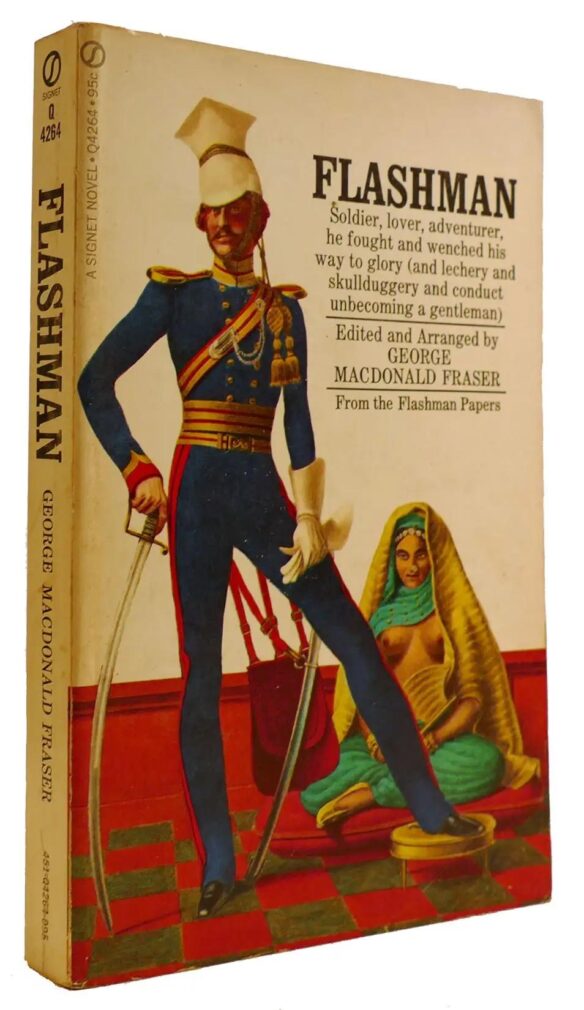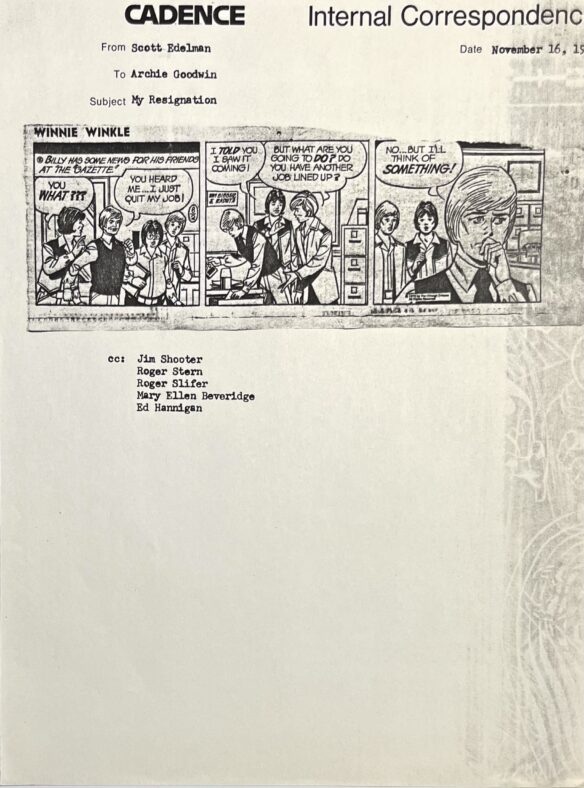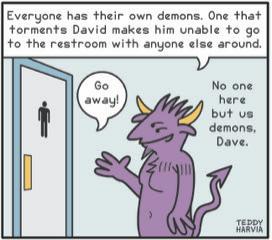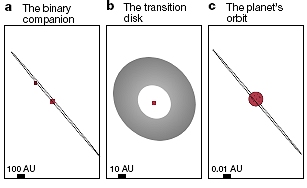(1) FUTURE TENSE. April 2025’s Future Tense Fiction story is “The 28th,” by Mark Stasenko—a story about AI, bias, and the criminal justice system.
The response essay by legal scholar Elizabeth Joh, of the University of California Davis, is “Automated Justice?”
… Yet nowhere is the use of AI as fraught as it is in the criminal justice system, where adverse decisions lead to starkly life-altering outcomes. This isn’t a hypothetical future concern: criminal justice automation of varying degrees has already arrived. Local police agencies can turn to predictive technologies to help direct patrol resources and even generate police reports. A number of jurisdictions use risk assessment tools to decide who should be detained pretrial. Others permit judges to use algorithmic tools to determine criminal sentences. Parole boards can rely on automated assessments to identify who should be eligible for parole.
So AI is already present in the criminal justice system. But how far should it go?…
(2) INFLUENCE OF ‘CLOUD ATLAS’. Charlie Jane Anders explores the question “Has ‘Cloud Atlas’ Become a Genre?” at Happy Dancing. Here’s an excerpt:
…I also feel like Cloud Atlas has become a shorthand for “genre-hopping novel with literary aspirations.”
As I’ve said before, this is how genres happen: a book comes along that everybody loves so much, they want more of the same. And “more of the same” leads to the use of tropes or devices that are reminiscent of that influential work.
To find out more, I talked to four authors of recent books that seemed to bear a clear influence from Cloud Atlas. Here’s what they told me.
Conscious influence
“I conceived of Down in the Sea of Angels as Cloud Atlas meets X-Men,” says Khan Wong of his brand new novel. Down in the Sea of Angels is about Maida Sun, who can touch any object and see the stories of anyone who’s interacted with it in the past. Maida’s story in 2106 becomes intertwined with stories of a girl in a 1906 brothel and a tech worker in 2006. Wong describes it as “a time-hopping dystopian fantasy about psychic powers, liberation, and our interconnectedness through time.”
Wong says that he started out doing something more similar to Cloud Atlas’ format of six storylines spanning vast periods of time. But as he developed the novel, he “scaled it back, “both in terms of the span of time and the number of storylines and genres.”…
(3) ADULTING NEEDED. [Item by SF Concatenation’s Jonathan Cowie.] Cli-Fi is becoming an established sub-genre of SF no least with books like Kim Stanley Robinson’s Ministry For The Future. However most politicians simply don’t get it: some even deny it! Meanwhile scientists working in the area are suffering mentally. This is something of which I am acutely aware having worked in climate science for a number of years. So this week’s Nature has a very important editorial message on behalf of today’s youth….
“Adults should finally act like adults on climate change”:
“You have stolen my dreams and my childhood with your empty words.” This rebuke to the delegates at the United Nations Climate Action Summit in New York City in 2019 came from a tearful Greta Thunberg, founder of the children’s climate movement Fridays For Future. Then aged 16, she urged attendees to inject more urgency into keeping global warming to within 1.5 °C of pre-industrial levels. Since then, hundreds of thousands of children around the world have made similarly impassioned appeals to adults to heed the overwhelming evidence of the dangers of climate change. But so far, a grown-up sense of responsibility is lacking….
…Quantifying what climate change will mean for those being born now is an active topic of research. This week in Nature, one group of climate researchers reports findings (L. Grant et al. Nature 641, 374–379; 2025) that must surely make adults take more notice of what younger people are saying. Building on an earlier study (W. Thiery et al. Science 374,158–160; 2021), Luke Grant, a climate researcher at the Vrije Universiteit Brussel, and his colleagues report that children and young people born in the present decade face exposure to heatwaves, crop failures, floods, droughts, wildfires and tropical cyclones, in a way that their parents and grandparents never did — and that this applies pretty much anywhere in the world.
Non-PDF version of the editorial with links to this week’s relevant research here.
(4) THE BIG THREE AND FRIENDS. Big Issue offers several examples in “These are all the times sci-fi writers predicted the future”.
…In a 1964 interview for the BBC’s Horizon program, another of the ‘Big Three’, Arthur C Clarke, said: “I’m perfectly serious when I suggest that one day we may have brain surgeons in Edinburgh operating on patients in New Zealand.” He expanded on this in his 1975 novel Imperial Earth, in which the protagonist explains the risks of telesurgery over a network experiencing high latency: “A half-second lag would not matter in conversation; but between a surgeon’s hand and eye, it might be fatal.”
Clarke’s vision became reality in (fittingly) 2001, when a New York-based surgeon removed the gall bladder of a patient in Strasbourg, 6,200km away. A medical robot called ZEUS cut the patient’s flesh; the surgeon’s movements reached ZEUS across a network designed to minimise lag times….
…Sometimes one sees a prediction coming true in real time, and asks: will we heed the warnings SF gave us? Jack Williamson’s 1947 novelette With Folded Hands tells of a new type of robot following a Prime Directive: “to serve and obey and guard men from harm”. Since the robots work for free, soon no one has a job. It gets worse. The robots take the “guard men from harm” directive too literally.
They ensure a person can’t do anything remotely dangerous. Before long, humans can do nothing except sit… with folded hands. We should not fear this scenario. But one can easily imagine a world in which creatives – writers, painters, musicians, photographers – twiddle their thumbs while AI spews out soulless content on demand.
Writers such as Williamson saw the threat eight decades ago. Don’t complain we’ve had no time to prepare.
(5) THE INCREDIBLE SHRINKING GAMING NEWS SCENE. [Item by Steven French.] The Guardian’s “Pushing Buttons” newsletter laments further loss of authenticity in video games journalism: “When video games journalism eats itself, we all lose out”.
Last week was a bad one for video games journalism. Two key contributors to the veteran site Giant Bomb, Jeff Grubb and Mike Minotti, have announced their departure after a recent podcast was taken down. The 888th episode of the Giant Bombcast reportedly featured a section lampooning new brand guidelinesissued to staff and is no longer available online. Later this week, it was announced that major US site Polygon was being sold to Valnet, owner of the ScreenRant and GameRant brands, resulting in a swathe of job losses. This follows ReedPop’s sale, in 2024, of four high-profile UK-based sites – Eurogamer, GamesIndustry.biz, Rock Paper Shotgun and VG247 – to IGN Entertainment, owned by Ziff Davis, which also resulted in redundancies.
It’s sad how these long-standing sites, each with vast audiences and sturdy reputations, have been traded and chopped up like commodities. On selling Polygon, Vox CEO Jim Bankoff said in a statement: “This transaction will enable us to focus our energies and investment resources in other priority areas of growth across our portfolio.” It felt gross, to be honest, to see this decade-old bastion of progressive video games writing being reduced to an asset ripe for off-loading. Of its purchase Valnet said: “Polygon is poised to reach new editorial heights through focused investment and innovation.” Quite how it will do that with a significantly reduced staff is anyone’s guess….
(6) THIRD (SEASON) FOUNDATION. Gizmodo analyzes the Season 3 teaser: “Foundation Season 3 Shares a First Look for Lee Pace Fans (and Everyone Else)”. Returns on Apple TV+ on July 11.
…Here’s the official description for the season: “Set 152 years after the events of season two, the Foundation has become increasingly established far beyond its humble beginnings while the Cleonic Dynasty’s Empire has dwindled. As both of these galactic powers forge an uneasy alliance, a threat to the entire galaxy appears in the fearsome form of a warlord known as ‘The Mule’ whose sights are set on ruling the universe by use of physical and military force, as well as mind control. It’s anyone’s guess who will win, who will lose, who will live and who will die as Hari Seldon, Gaal Dornick, the Cleons, and Demerzel play a potentially deadly game of intergalactic chess.”…
(7) NOTES FROM BEAR MCCREARY. “‘The Lord Of The Rings: The Rings Of Power’ Composer Bear McCreary On ‘Limitless Palette’ Of J.R.R. Tolkien’s Work & ‘Pushing Boundaries’ For Season 3” at Deadline.
…With Season 2 and the rise of Sauron, McCreary was excited to musically explore parts of Tolkien’s world that haven’t been adapted to screen. “We go to this part of the map that no adaptation has ever done before, the lands of Rhûn, and I’ve always wanted to write for the Bulgarian women’s choir,” says McCreary. “They are singing in a language Tolkien himself devised, so they had to learn it phonetically. But they brought all the beautiful, unique things that come with that kind of music.”…
(8) TOMORROW PRIZE CEREMONY. The Omega Sci-Fi Project’s “Tomorrow Prize & The Green Feather Award: Celebrity Readings & Honors” will be held on Saturday, May 17, from 4:00-6:00 p.m. at Vroman’s Bookstore in Pasadena. Free registration at the link.
Our line-up of incredible guest stars include:
Nana Visitor from Star Trek: Deep Space, Tim Russ from Star Trek: Voyager, Isabella Gomez from One Day at a Time, Marcelo Tubert from Star Trek: The Next Generation, Amy Tolsky from Jury Duty, and Rico E. Anderson from Star Trek: Renegades.
Students winners and honorees of the Omega Sci-Fi Project’s awards are publicly recognized at the incredible May culminating event, where celebrity actors perform dramatic readings of finalists’ stories that you won’t want to miss!
“The young writers are offered a wonderful chance at recognition for their creative work through the awards process. Often, students don’t even realize that creative writing is a meaningful way for them to explore a world they struggle to understand. That is, until they get to try it!” says Bodin Adler, a participating teacher from Hollywood High School.
This event culminates a season of classroom workshops led by trained writers and literary enthusiasts and are free to any educator who wishes to participate. Within these workshops, students get to explore the development, writing, and editing processes for crafting a short science fiction story, preparing them to submit their original work to The Tomorrow Prize or The Green Feather Award, the two competitions offered under the Omega Sci-Fi Project umbrella.

(9) MEMORY LANE.
[Written by Cat Eldridge.]
Sir Harry Paget Flashman VC, KCB, KCIE, 1822 – 1915
I grant he’s not even genre adjacent, but I’ll give you a tale in a minute that makes it relevant to us. Harry Flashman appears in a series of twelve George MacDonald Fraser’s books collectively known as The Flashman Papers. If Flashman had a birthday, the author says it would have been earlier this week, May 5.
The first novel, Flashman, was published in 1969 and many readers here in the States thought it was a work of non-fiction. He’s certainly not the only fictional that readers have assumed was real. Or wished was so. Who would you would want to be?
The books center on the exploits of Harry Flashman. He is a cowardly British soldier, rake and just generally disreputable character who is placed in a series of real historical incidents between 1839 and 1894. It must be noted that despite his cowardice and his attempts to flee danger whenever possible, he becomes a decorated war hero and rises to the rank of brigadier-general.
There is a Chumbawamba song, “Hanging on the Old Barb Wire”, which has the lyric
If you want to find the general
I know where he is
He’s pinning another medal on his chest
I saw him, I saw him
Pinning another medal on his chest
Pinning another medal on his chest
(It’s a variant of a Great War song of the same name. As the band notes on their English Rebel Songs 1381–1914 LP, “Hanging on the Old Barbed Wire was written by soldiers in the trenches in the first world war. Designed to be sung whilst marching the song is one of many showing the dissent and disgust at the way war perpetuates the inequalities of rich and poor—those with the money give the orders, those without money face the guns.”)
Royal Flash, the 1975 British film, is based upon the second Flashman novel of the same name. It stars a thirty-two year old Malcolm McDowell as Flashman. It was not well received as The Observer noted it left them “breathless not so much with enchantment as with boredom”. However audience reviewers at Rotten Tomatoes currently give it a rating of sixty-four percent which isn’t bad at all.
Here’s the trailer with a really funny narrator. As always, the standard warming about linking to copies of the film which is up on YouTube apply. You really don’t want to be defenestrated, do you? It can be rather painful or worse.
Now for that genre connection that mentioned much earlier. No, I didn’t forget…
Kage Baker didn’t actually write a Flashman novel, though we talked several times about her doing so, but the bones of one appeared in one of her novels as her sister Kathleen told me here: “Most of her notes she used in her last novel, Not Less Than Gods, which she wrote while she was sick, and that was published as she was dying. As far as I can tell, Kage and I were the only people in the world who liked it. A lot of it was panned because the reviewers didn’t get most of the satire, or hated Edward Alton Bell-Fairfax, or both. Anyway, even if you personally disliked the book, I think you can see the bones of a Flashman novel there.”
Now the Green Man reviewer also liked it though he had a lump in his throat as Kage had just died as he wrote his review.
I’m pleased to say the entire series is available in hardcover, trade paperback, epub and audiobook. As audiobooks, the narration as done by David Chase captures the character extraordinarily well.

(10) COMICS SECTION.
- Non Sequitur offers Stone Age art criticism.
- Rhymes with Orange gives an endorsement.
- The Other Coast brings in a new detector.
- Tom Gauld gives fans a choice of bookshops.
(11) SFF TO STREAM NOW. “’Godzilla Minus One’ and Other Science Fiction Movies to Stream” – recommendations from the New York Times. (Link bypasses paywall.) Here’s one of their picks.
‘Alienoid: Return to the Future’
Can’t decide if you want to watch a movie involving tentacled aliens or one with a sorcerer? Wire fu or time travel? How about ominous spaceships? The Korean director Choi Dong-hoon has you covered with his two-part “Alienoid” epic, which includes all of these elements. The second installment kicks off with a serviceable recap so newcomers can jump in, but having seen its predecessor, “Alienoid” (2022), makes the overall experience more enjoyable.
The madcap action goes back and forth between the 14th century and 2022 Seoul, when an alien menace going by the Controller is threatening to kill the entire population by unleashing a lethal gas. The key to defeat the Controller is in the past and involves a weapon called the Divine Blade. Even more important are the actions of a ragtag team that includes the spunky Ean (Kim Tae-ri, from “Space Sweepers”) and her possible love interest, Muruk (Ryu Jun-yeol). Choi keeps up a steady pace, peppered with goofy humor and surreal touches, as when Roy Orbison’s “In Dreams” plays during a big moment. Narrative coherence is an afterthought in the “Alienoid” universe so it’s best to go with whatever wackadoo scenes the movies throw at you: What matters here is pure fun, and this installment delivers.
(12) SHAUN THE SHEEP 3. [Item by Steven French.] Who could resist a trip to Mossy Bottom?! “Aardman announces third Shaun the Sheep movie: The Beast of Mossy Bottom” – details in the Guardian.
A Halloween-themed third Shaun the Sheep film is in the works from Aardman Animations, following hot on the heels of the success of Wallace & Gromit: Vengeance Most Fowl.
“Expect smashed pumpkins, wayward science, and a wild hairy beast,” said Sarah Cox, chief creative director of Aardman, about the film, which launches international sales via studio StudioCanal at Cannes next week, but has already been acquired by Sky for UK distribution.
“Shaun the Sheep: The Beast of Mossy Bottom sees the residents of Mossy Bottom Farm looking forward to Halloween – until the clumsy farmer trashes the flock’s beloved pumpkin patch!” runs a synopsis for the film.
“When Shaun turns mad scientist to fix the problem, things rapidly spiral out of control … With the farmer missing and a wild beast roaming the woods of Mossingham, all the ingredients are in place for a monstrously fun family adventure.”
(13) LEGO AND LUNAR OUTPOST PARTNERSHIP. “Lego and Lunar Outpost to roll out ‘Moon Rover Space Vehicle’ in August” promises CollectSPACE.

The United States’ first teleoperated rover to reach the moon’s surface is rolling out as a Lego model this summer, together with two futuristic vehicles inspired by real-life robotic lunar explorers.
The new Lunar Outpost Moon Rover Space Vehicle is scheduled for release on Aug. 1, as part of Lego’s Technic line of advanced building kits. The $99.99 set is the result of a collaboration between the Danish toymaker and Lunar Outpost, a Colorado-based company specializing in lunar surface mobility, commercial space robotics and space resources.
“Inspired by real-life Lunar Outpost vehicles enabling humanity’s return to the moon, this Lego Technic Lunar Outpost Moon Rover Space Vehicle comes with a moon rover, mining rover and MAPP rover to inspire endless journeys of exploration,” reads the set’s description on Lego’s website.
The MAPP, or Mobile Autonomous Prospecting Platform, was the key part of Lunar Outpost’s Lunar Voyage 1 mission, which on March 6 arrived on the moon, making history. It would have made even more, had the commercial lander that delivered MAPP there not have immediately tipped over, trapping the rover inside its garage. It never had the chance to actually rove anywhere….
(14) ONE LAST LANDING ON THE GLOBE THAT GAVE IT BIRTH. “53-Year-Old Soviet Spacecraft Will Plummet Back to Earth This Week” reports Gizmodo.
Kosmos 482 has been trapped in Earth’s orbit for 53 years but its wandering journey is coming to an end. The failed Venus mission is expected to reenter through the atmosphere in a dramatic fall toward its home planet, where it may remain intact or scatter its bits across a still unknown location on either side of the equator.
The Soviet-era spacecraft will plunge through Earth’s atmosphere sometime between May 8 to 12. As of now, the exact location of where Kosmos 482 will crash-land on Earth is still unknown, with a preliminary estimate that stretches across large parts of the world on either side of the equator. It’s also unclear whether the spacecraft will remain in one piece or if it will break apart during reentry, raining down bits of debris.
Kosmos 482 launched on March 31, 1972 from the Baikonur Cosmodrome spaceport in what is know Kazakhstan. The mission was an attempt by the Soviet space program to reach Venus, but it failed to gain enough velocity to enter a transfer trajectory toward the scorching hot planet….
(15) DONE BY DAYLIGHT. “Lunar laser: China makes 1st daytime laser-ranging measurement from Earth to the moon” – Space has the story.
China has achieved a milestone feat, making the first-ever laser ranging measurement from Earth to the moon during the daytime.
Researchers at Yunnan Observatories under the Chinese Academy of Sciences (CAS) used an infrared lunar laser ranging system of a recently upgraded 1.2-meter (3.9 feet) telescope to ping a small laser retroreflector on the Tiandu 1 satellite orbiting the moon.
Laser ranging over lunar distances is challenging, requiring sending a high-power, precise beam over 186,000 miles (300,000 kilometers) to hit a small corner retroreflector, which bounces the laser pulse straight back where it came from. The return signal then needs to be picked up by a telescope using ultra-sensitive detectors. Doing this in the daytime brings the added challenge of massive background “noise” from the sun….
(16) SQUAREPANTS TREK BLOOPERS. Animation Magazine is there when “Paramount+ Voyages Behind the Scenes of Crossover Spot ‘Patrick Starship Enterprise’”.
Following the debut of its new Star Trek: Strange New Worlds X SpongeBob SquarePants promo video (which you can watch here), Paramount+ has dropped a behind-the-scenes blooper reel full of illogical, astro-nautical amusement.
Starring Strange New Worlds cast members Ethan Peck (Spock), Anson Mount (Christopher Pike) and Celia Rose-Gooding (Nyota Uhura), the new video pokes fun at the making of the short and features some funny moments where we see the creative stand-in solutions for the animated characters, which include SpongeBob, Sandy and Mr. Krabs…
[Thanks to Steven French, Kathy Sullivan, Teddy Harvia, Steve Green, Joey Eschrich, Mike Kennedy, Andrew Porter, John King Tarpinian, Chris Barkley, Cat Eldridge, SF Concatenation’s Jonathan Cowie, and Mark Roth-Whitworth for some of these stories. Title credit belongs to File 770 contributing editor of the day Jim Janney.]









